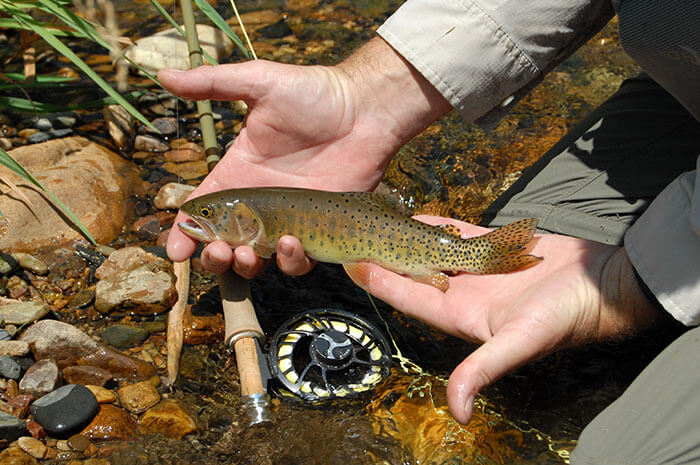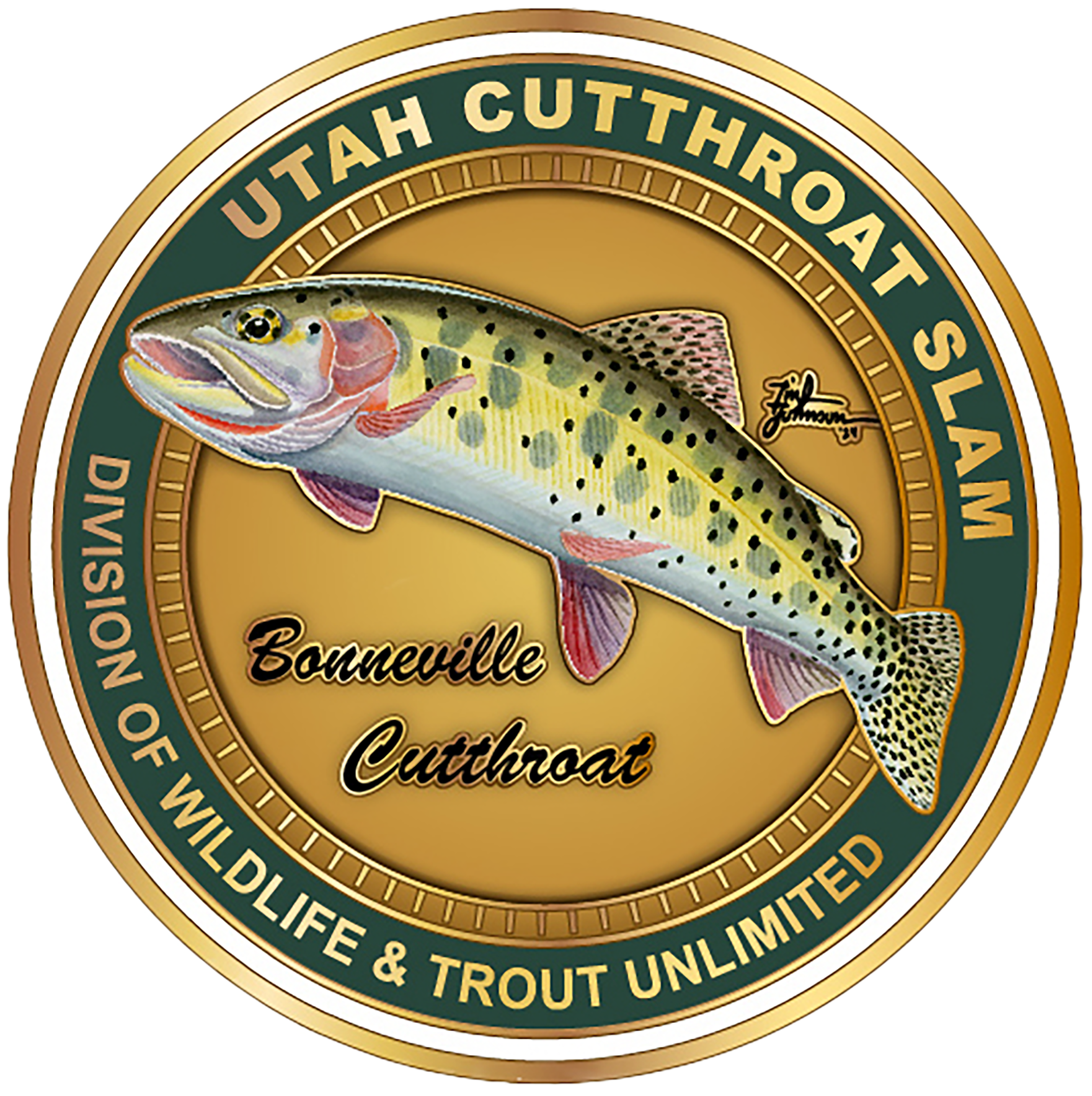
10 Aug Orvis Slam Story, Day Three: Cutts and Ladders
Original Story found HERE from Orvis News. Story by Phil Monahan
On the morning of our third day in Utah, we drove to the small town of Coalville, where we met up with a group of heavy hitters. In attendance were Greg Sheehan, the Utah Division of Wildlife Resources Director; Paul Thompson, Northern Region Aquatics Manager; Habitat Restoration Biologist Clint Brunson; and Paul Burnett, Trout Unlimited’s Utah Project Leader. We loaded into a couple trucks and headed into the mountains to visit a culvert-replacement project partially funded by the Orvis/TU 1,000 Miles Campaign.

Photo by Phil Monahan
Fish Creek is a tributary of Chalk Creek in the Weber River basin, and it provides vital spawning habitat for the big fluvial cutthroats in the Weber. For decades, more than 100 feet of failing culvert with more than thirty-five feet of road fill on top of it had threatened fish passage, and then in 2011, a massive flood caused everything to collapse into the stream.
In cooperation with the landowners and a broad partnership that included Orvis, TU developed the Fish Creek restoration project to restore fish passage and reconnect seven miles of upper Fish Creek, stabilize the hillsides to reduce sediment entering Fish Creek, and build a bridge to replace the culvert.

Photo by Phil Monahan
It’s one thing to see photos of such a project, but it’s quite another to stand on the banks of Fish Creek and take in the scale of the improvements. What was once a mass of earth surrounding a culvert is now open stream, and big cutthroats can swim out of the Weber, up Chalk Creek, and into Fish Creek to maintain the health of the population.
Click here to read more about the Fish Creek project.

Photo by Paul Thompson

Photo by Phil Monahan
Next, we headed down to where Interstate 80 carves its way through the valley to see a project just getting underway. Strawberry Creek, another spawning tributary of the Weber, flows through a concrete tunnel beneath the highway. The problem is that the upstream end of the tunnel is 18 feet higher than the downstream end, which creates a fast, shallow current that fish can’t navigate. Paul Burnett explained that a metal fish ladder will be installed later this year–at a cost of more than $100,000–to finally allow cutthroats to spawn in Strawberry Creek again. It was a stark reminder of both the many challenges these fish face and the costs we must bear to help them. Some of the money for this project will come from Cutthroat Slam registration fees.

Photo by Phil Monahan
Now, it was time to fish. The two Pauls, Fred, and I drove up to the North Fork of the Ogden River to catch our Bonneville cutthroats. This was small water, with very little room, often requiring a bow-and-arrow cast or dapping just to get your fly on the water. Fred and Paul Burnett hopped in not far from the trucks, while Paul Thompson and I headed upstream. Right away we were into fish, and once again, the PMX was the fly of choice. Most pockets that looked fishy held trout, and we caught 8 or 10 before things started to quiet down. After three days, we were halfway to our Cutthroat Slam.
Come back tomorrow for Part IV.
Click here for more information about the Utah Cutthroat Slam.
Click here to read Part I.
Click here to read Part II.




Photo by Paul Thompson

Sorry, the comment form is closed at this time.